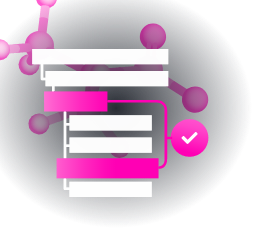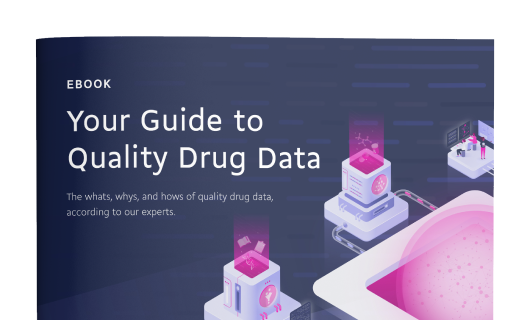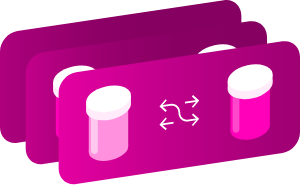Identification
- Generic Name
- 1,4-Butanediol
- DrugBank Accession Number
- DB01955
- Background
Not Available
- Type
- Small Molecule
- Groups
- Experimental
- Structure
- Weight
- Average: 90.121
Monoisotopic: 90.068079564 - Chemical Formula
- C4H10O2
- Synonyms
- Not Available
- External IDs
- NSC-406696
Pharmacology
- Indication
Not Available
 Reduce drug development failure ratesBuild, train, & validate machine-learning models
Reduce drug development failure ratesBuild, train, & validate machine-learning models
with evidence-based and structured datasets.Build, train, & validate predictive machine-learning models with structured datasets.- Contraindications & Blackbox Warnings
 Prevent Adverse Drug Events TodayTap into our Clinical API for life-saving information on contraindications & blackbox warnings, population restrictions, harmful risks, & more.Avoid life-threatening adverse drug events with our Clinical API
Prevent Adverse Drug Events TodayTap into our Clinical API for life-saving information on contraindications & blackbox warnings, population restrictions, harmful risks, & more.Avoid life-threatening adverse drug events with our Clinical API- Pharmacodynamics
Not Available
- Mechanism of action
Target Actions Organism UEndoplasmic reticulum mannosyl-oligosaccharide 1,2-alpha-mannosidase Not Available Humans UPhospholipase A2, membrane associated Not Available Humans UGroup IIE secretory phospholipase A2 Not Available Humans URibosomal small subunit pseudouridine synthase A Not Available Haemophilus influenzae (strain ATCC 51907 / DSM 11121 / KW20 / Rd) UPenicillin-insensitive murein endopeptidase Not Available Escherichia coli (strain K12) - Absorption
Not Available
- Volume of distribution
Not Available
- Protein binding
Not Available
- Metabolism
- Not Available
- Route of elimination
Not Available
- Half-life
Not Available
- Clearance
Not Available
- Adverse Effects
 Improve decision support & research outcomesWith structured adverse effects data, including: blackbox warnings, adverse reactions, warning & precautions, & incidence rates. View sample adverse effects data in our new Data Library!Improve decision support & research outcomes with our structured adverse effects data.
Improve decision support & research outcomesWith structured adverse effects data, including: blackbox warnings, adverse reactions, warning & precautions, & incidence rates. View sample adverse effects data in our new Data Library!Improve decision support & research outcomes with our structured adverse effects data.- Toxicity
Not Available
- Pathways
- Not Available
- Pharmacogenomic Effects/ADRs
- Not Available
Interactions
- Drug Interactions
- This information should not be interpreted without the help of a healthcare provider. If you believe you are experiencing an interaction, contact a healthcare provider immediately. The absence of an interaction does not necessarily mean no interactions exist.Not Available
- Food Interactions
- Not Available
Categories
- Drug Categories
- Chemical TaxonomyProvided by Classyfire
- Description
- This compound belongs to the class of organic compounds known as primary alcohols. These are compounds comprising the primary alcohol functional group, with the general structure RCOH (R=alkyl, aryl).
- Kingdom
- Organic compounds
- Super Class
- Organic oxygen compounds
- Class
- Organooxygen compounds
- Sub Class
- Alcohols and polyols
- Direct Parent
- Primary alcohols
- Alternative Parents
- Hydrocarbon derivatives
- Substituents
- Aliphatic acyclic compound / Hydrocarbon derivative / Primary alcohol
- Molecular Framework
- Aliphatic acyclic compounds
- External Descriptors
- glycol, butanediol (CHEBI:41189) / a glycol (CPD-13560)
- Affected organisms
- Not Available
Chemical Identifiers
- UNII
- 7XOO2LE6G3
- CAS number
- 110-63-4
- InChI Key
- WERYXYBDKMZEQL-UHFFFAOYSA-N
- InChI
- InChI=1S/C4H10O2/c5-3-1-2-4-6/h5-6H,1-4H2
- IUPAC Name
- butane-1,4-diol
- SMILES
- OCCCCO
References
- Synthesis Reference
William E. Smith, "Production of tetrahydrofuran from 1,4-butanediol using tungsten on alumina catalysts." U.S. Patent US4136099, issued September, 1941.
US4136099- General References
- Satta R, Dimitrijevic N, Manev H: Drosophila metabolize 1,4-butanediol into gamma-hydroxybutyric acid in vivo. Eur J Pharmacol. 2003 Jul 25;473(2-3):149-52. [Article]
- Zvosec DL, Smith SW, McCutcheon JR, Spillane J, Hall BJ, Peacock EA: Adverse events, including death, associated with the use of 1,4-butanediol. N Engl J Med. 2001 Jan 11;344(2):87-94. [Article]
- Poldrugo F, Snead OC 3rd: 1,4 Butanediol, gamma-hydroxybutyric acid and ethanol: relationships and interactions. Neuropharmacology. 1984 Jan;23(1):109-113. [Article]
- External Links
- PubChem Compound
- 8064
- PubChem Substance
- 46506248
- ChemSpider
- 13835209
- ChEBI
- 41189
- ChEMBL
- CHEMBL171623
- ZINC
- ZINC000001599375
- Therapeutic Targets Database
- DAP000983
- PDBe Ligand
- BU1
- Wikipedia
- 1,4-Butanediol
- PDB Entries
- 1bk9 / 1m8r / 1m8s / 1tzp / 1vio / 1x9d / 2b9y / 2bab / 2hw8 / 2rh1 … show 74 more
Clinical Trials
- Clinical Trials
Pharmacoeconomics
- Manufacturers
- Not Available
- Packagers
- Not Available
- Dosage Forms
- Not Available
- Prices
- Not Available
- Patents
- Not Available
Properties
- State
- Solid
- Experimental Properties
Property Value Source melting point (°C) 20.1 °C PhysProp boiling point (°C) 235 °C PhysProp water solubility 1E+006 mg/L (at 20 °C) YALKOWSKY,SH & DANNENFELSER,RM (1992) logP -0.83 HANSCH,C ET AL. (1995) pKa 14.5 (at 25 °C) RIDDICK,JA ET AL. (1986) - Predicted Properties
Property Value Source Water Solubility 675.0 mg/mL ALOGPS logP -0.63 ALOGPS logP -0.63 Chemaxon logS 0.87 ALOGPS pKa (Strongest Acidic) 15.67 Chemaxon pKa (Strongest Basic) -2.4 Chemaxon Physiological Charge 0 Chemaxon Hydrogen Acceptor Count 2 Chemaxon Hydrogen Donor Count 2 Chemaxon Polar Surface Area 40.46 Å2 Chemaxon Rotatable Bond Count 3 Chemaxon Refractivity 24.06 m3·mol-1 Chemaxon Polarizability 10.16 Å3 Chemaxon Number of Rings 0 Chemaxon Bioavailability 1 Chemaxon Rule of Five Yes Chemaxon Ghose Filter No Chemaxon Veber's Rule No Chemaxon MDDR-like Rule No Chemaxon - Predicted ADMET Features
Property Value Probability Human Intestinal Absorption + 0.9406 Blood Brain Barrier + 0.7789 Caco-2 permeable + 0.5362 P-glycoprotein substrate Non-substrate 0.7076 P-glycoprotein inhibitor I Non-inhibitor 0.9564 P-glycoprotein inhibitor II Non-inhibitor 0.913 Renal organic cation transporter Non-inhibitor 0.8661 CYP450 2C9 substrate Non-substrate 0.8409 CYP450 2D6 substrate Non-substrate 0.8664 CYP450 3A4 substrate Non-substrate 0.7908 CYP450 1A2 substrate Non-inhibitor 0.8355 CYP450 2C9 inhibitor Non-inhibitor 0.9068 CYP450 2D6 inhibitor Non-inhibitor 0.9719 CYP450 2C19 inhibitor Non-inhibitor 0.9475 CYP450 3A4 inhibitor Non-inhibitor 0.965 CYP450 inhibitory promiscuity Low CYP Inhibitory Promiscuity 0.9267 Ames test Non AMES toxic 0.9132 Carcinogenicity Non-carcinogens 0.6575 Biodegradation Ready biodegradable 0.7712 Rat acute toxicity 1.7406 LD50, mol/kg Not applicable hERG inhibition (predictor I) Weak inhibitor 0.8362 hERG inhibition (predictor II) Non-inhibitor 0.9054
Spectra
- Mass Spec (NIST)
- Not Available
- Spectra
- Chromatographic Properties
Collision Cross Sections (CCS)
Adduct CCS Value (Å2) Source type Source [M-H]- 110.233385 predictedDarkChem Lite v0.1.0 [M-H]- 112.375985 predictedDarkChem Lite v0.1.0 [M-H]- 122.14549 predictedDeepCCS 1.0 (2019) [M+H]+ 111.922185 predictedDarkChem Lite v0.1.0 [M+H]+ 113.139785 predictedDarkChem Lite v0.1.0 [M+H]+ 124.076065 predictedDeepCCS 1.0 (2019) [M+Na]+ 110.629285 predictedDarkChem Lite v0.1.0 [M+Na]+ 112.169385 predictedDarkChem Lite v0.1.0 [M+Na]+ 132.35194 predictedDeepCCS 1.0 (2019)
Targets

Build, predict & validate machine-learning models
Use our structured and evidence-based datasets to unlock new
insights and accelerate drug research.
insights and accelerate drug research.
Use our structured and evidence-based datasets to unlock new insights and accelerate drug research.
- Kind
- Protein
- Organism
- Humans
- Pharmacological action
- Unknown
- General Function
- Mannosyl-oligosaccharide 1,2-alpha-mannosidase activity
- Specific Function
- Involved in glycoprotein quality control targeting of misfolded glycoproteins for degradation. It primarily trims a single alpha-1,2-linked mannose residue from Man(9)GlcNAc(2) to produce Man(8)Glc...
- Gene Name
- MAN1B1
- Uniprot ID
- Q9UKM7
- Uniprot Name
- Endoplasmic reticulum mannosyl-oligosaccharide 1,2-alpha-mannosidase
- Molecular Weight
- 79579.18 Da
References
- Kind
- Protein
- Organism
- Humans
- Pharmacological action
- Unknown
- General Function
- Phospholipid binding
- Specific Function
- Thought to participate in the regulation of the phospholipid metabolism in biomembranes including eicosanoid biosynthesis. Catalyzes the calcium-dependent hydrolysis of the 2-acyl groups in 3-sn-ph...
- Gene Name
- PLA2G2A
- Uniprot ID
- P14555
- Uniprot Name
- Phospholipase A2, membrane associated
- Molecular Weight
- 16082.525 Da
References
- Overington JP, Al-Lazikani B, Hopkins AL: How many drug targets are there? Nat Rev Drug Discov. 2006 Dec;5(12):993-6. [Article]
- Imming P, Sinning C, Meyer A: Drugs, their targets and the nature and number of drug targets. Nat Rev Drug Discov. 2006 Oct;5(10):821-34. [Article]
- Berman HM, Westbrook J, Feng Z, Gilliland G, Bhat TN, Weissig H, Shindyalov IN, Bourne PE: The Protein Data Bank. Nucleic Acids Res. 2000 Jan 1;28(1):235-42. [Article]
- Kind
- Protein
- Organism
- Humans
- Pharmacological action
- Unknown
- General Function
- Phospholipase a2 activity
- Specific Function
- PA2 catalyzes the calcium-dependent hydrolysis of the 2-acyl groups in 3-sn-phosphoglycerides. Has a preference for arachidonic-containing phospholipids.
- Gene Name
- PLA2G2E
- Uniprot ID
- Q9NZK7
- Uniprot Name
- Group IIE secretory phospholipase A2
- Molecular Weight
- 15988.525 Da
References
- Overington JP, Al-Lazikani B, Hopkins AL: How many drug targets are there? Nat Rev Drug Discov. 2006 Dec;5(12):993-6. [Article]
- Imming P, Sinning C, Meyer A: Drugs, their targets and the nature and number of drug targets. Nat Rev Drug Discov. 2006 Oct;5(10):821-34. [Article]
- Berman HM, Westbrook J, Feng Z, Gilliland G, Bhat TN, Weissig H, Shindyalov IN, Bourne PE: The Protein Data Bank. Nucleic Acids Res. 2000 Jan 1;28(1):235-42. [Article]
- Kind
- Protein
- Organism
- Haemophilus influenzae (strain ATCC 51907 / DSM 11121 / KW20 / Rd)
- Pharmacological action
- Unknown
- General Function
- Rna binding
- Specific Function
- Responsible for synthesis of pseudouridine from uracil-516 in 16S ribosomal RNA.
- Gene Name
- rsuA
- Uniprot ID
- P45124
- Uniprot Name
- Ribosomal small subunit pseudouridine synthase A
- Molecular Weight
- 26212.405 Da
References
- Kind
- Protein
- Organism
- Escherichia coli (strain K12)
- Pharmacological action
- Unknown
- General Function
- Serine-type endopeptidase activity
- Specific Function
- Involved in the removal of murein from the sacculus. May also facilitate integration of nascent murein strands into the sacculus by cleaving the peptide bonds between neighboring strands in mature ...
- Gene Name
- mepA
- Uniprot ID
- P0C0T5
- Uniprot Name
- Penicillin-insensitive murein endopeptidase
- Molecular Weight
- 30136.415 Da
References
Drug created at June 13, 2005 13:24 / Updated at June 12, 2020 16:52

